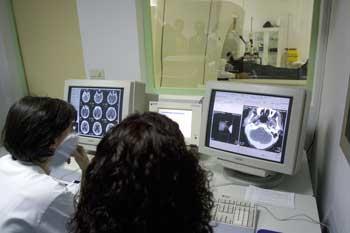
[This article was revised on July 23, 2014, to clarify the relationship between the work reported here and the related problem of calculating relativistic and quantum effects on electron energy levels. The latter becomes a significant factor for the higher atomic number atoms. - Editor]
NIST's James Sims and IU's Stanley Hagstrom have calculated the nonrelativistic base energy levels for the four electrons in the element beryllium as well as the positive ions of all the other elements having the same number of electrons as beryllium, an accomplishment that has required nearly an entire career's effort on Sims' part. (Electron energy levels also depend on relativity and quantum dynamics effects caused by the atom's nucleus, but they're negligible until you get to much larger atoms.) Precise determination of the base energy—crucial for determining the amount necessary to raise an atom from its base energy level to any level higher—has great intrinsic value for fundamental atomic research, but the team's technique has implications far broader than for a single element.
Sims says the technique allowed the calculation of energy levels with eight-decimal accuracy, resulting in a remarkably smooth curve that they expected theoretically but were not sure they would attain in practice. For the vast majority of the elements in the periodic table, the calculated results are a thousand times more accurate than previous values which have been reported for the nonrelativistic model. The results, according to Sims, suggest their method could enable computation of other atomic properties—electron affinity and ionization potential, for example—that are important for astrophysics and other fields of atomic research.
Their method is the culmination of decades of effort aimed at using quantum mechanics to predict base energy levels from first principles. Sims first proposed in the late 1960s that such a quantum approach could be possible, but the complex calculations involved were beyond the reach of the world's best computers. Only in 2006, after the advent of parallel computing—linking many computers together as a unified cluster—were he and Hagstrom able to create workable algorithms for calculating the energies for a two-electron hydrogen molecule more accurately than could be done experimentally. Then, in 2010, they improved the algorithms to bring lithium's three electrons within reach.
Beryllium's four electrons proved a new hurdle, but perhaps the last significant one. Much of the difficulty stems from the fact that mutual repulsion among the electrons, combined with their attraction for the nucleus, creates a complex set of interacting forces that are at least time-consuming, if not practically impossible, to calculate. The complexity grows with the addition of each new electron, but the team found a mathematical approach that can reduce an atom's electron cloud to a group of problems, none of which are more complex than solving a four-electron system.
Calling their approach a shortcut would be in some ways a misnomer. Where the calculation for lithium required a cluster of 32 parallel processors, beryllium required 256, and even then, the cluster needed to operate at extremely high efficiency for days. But the payoff was that they could calculate the energies for all four-electron ground states—meaning not only all of the elements in beryllium's column on the periodic table, each of which has four electrons in its outer shell, but also for all other elements in ionized states that have four electrons, such as boron with one electron missing, carbon missing two, and so forth. Relativistic and other effects are not included in the current model and become more significant for larger atomic numbers, but this study does demonstrate the importance of careful analysis and parallel computational approaches to enable "virtual measurement" of atomic properties based on theory, according to NIST researchers.
J.A. Sims and S.A. Hagstrom. Hylleraas-configuration-interaction nonrelativistic energies for the 1S ground states of the beryllium isoelectronic sequence. Journal of Chemical Physics, DOI 10.1063/1.4881639, June 11, 2014.

